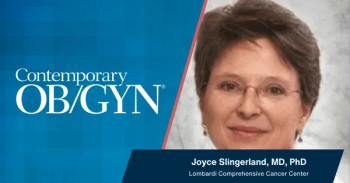
Surgical debulking of ovarian cancer: Past, present or future
Ovarian cancer is the "silent killer," causing more deaths in the United States than all other gynecologic malignancies combined. This article focuses on the recent debate or whether or when patients with advanced disease should undergo debulking surgery.
Key Points
Incidence and prevalence
One in 71 American women (1.4%) will develop ovarian cancer during her lifetime.1 In 2009, it is estimated that 21,550 new patients were diagnosed and 14,600 deaths occurred.2 This highly lethal disease has been portrayed as a "silent killer" because it does not present with dramatic bleeding, excruciating pain, or an obvious lump. Instead, the typical symptoms of ovarian cancer tend to be indolent (Table 1).3 Patients and their healthcare providers often attribute such nonspecific changes to aging, dietary indiscretions, stress, depression, or the onset of irritable bowel syndrome. Frequently, women are medically managed for indigestion or other presumed ailments without having a pelvic examination. As a result, substantial delays before diagnosis are the norm, and more than two-thirds of patients still present with advanced stage III-IV disease.4
The rationale for surgically debulking ovarian cancer represents a rather unique strategy in oncology because no other malignancies have shown a similar benefit. In fact, the concept did not really catch on until the mid-1970s, when C Thomas Griffiths, MD, published his seminal paper suggesting a survival benefit.7 Numerous case series and other retrospective reports rapidly accrued thereafter to further support the efficacy of this approach.8-10
For the past 3 decades, conventional dogma has been that the preferred initial treatment of women with advanced ovarian cancer is surgical debulking, despite mixed conclusions of subanalyses performed on published outcomes data from large, randomized, collaborative-group chemotherapy trials.11-13
The success of the surgery depends on numerous factors, including patient selection, the location of the tumors, and the surgeon's expertise. To achieve a survival benefit, the surgery should result in no residual tumors individually measuring more than 2 cm.14 For purposes of uniformity, the Gynecologic Oncology Group (GOG) has defined "optimal" debulking as residual implants up to 1 cm.11 Such measurements are subjectively determined at the completion of surgery.
Because of tissue induration or inadequate exploration, assessments of residual tumor size are often not entirely accurate.15 As a result, GOG data suggest that leaving no more than 1 cm of residual disease provides only a modest improvement in survival compared to tumors larger than 1 cm.16,17 However, when a complete resection is performed, outcomes are vastly superior. Thus, the penultimate goal of debulking is to achieve no visible or palpable remaining disease anywhere in the abdomen. Unfortunately, the latter has been shown to be possible in only 23% and 8% of stage III and IV patients, respectively.16,17
For the most part, upfront surgery is only beneficial in those patients who can be optimally debulked. Unfortunately, preoperative CA125 levels, computed tomography (CT) scans, and physical examinations are often not reliable to predict the intraoperative findings. As a result, many patients taken to the operating room will be left with significant amounts of unresectable disease.
Whether optimally debulked or not, the postoperative recovery may be prolonged and fraught with complications. Not infrequently, initiation of chemotherapy is delayed, or worse, postponed indefinitely.
Newsletter
Get the latest clinical updates, case studies, and expert commentary in obstetric and gynecologic care. Sign up now to stay informed.










